- MON-SAT: 10AM - 5PM | SUN: 11AM - 4PM
- 1349-1353 High St, Malvern, VIC 3144
- (03) 9041 9995 | AH: 0412378798
- [email protected]
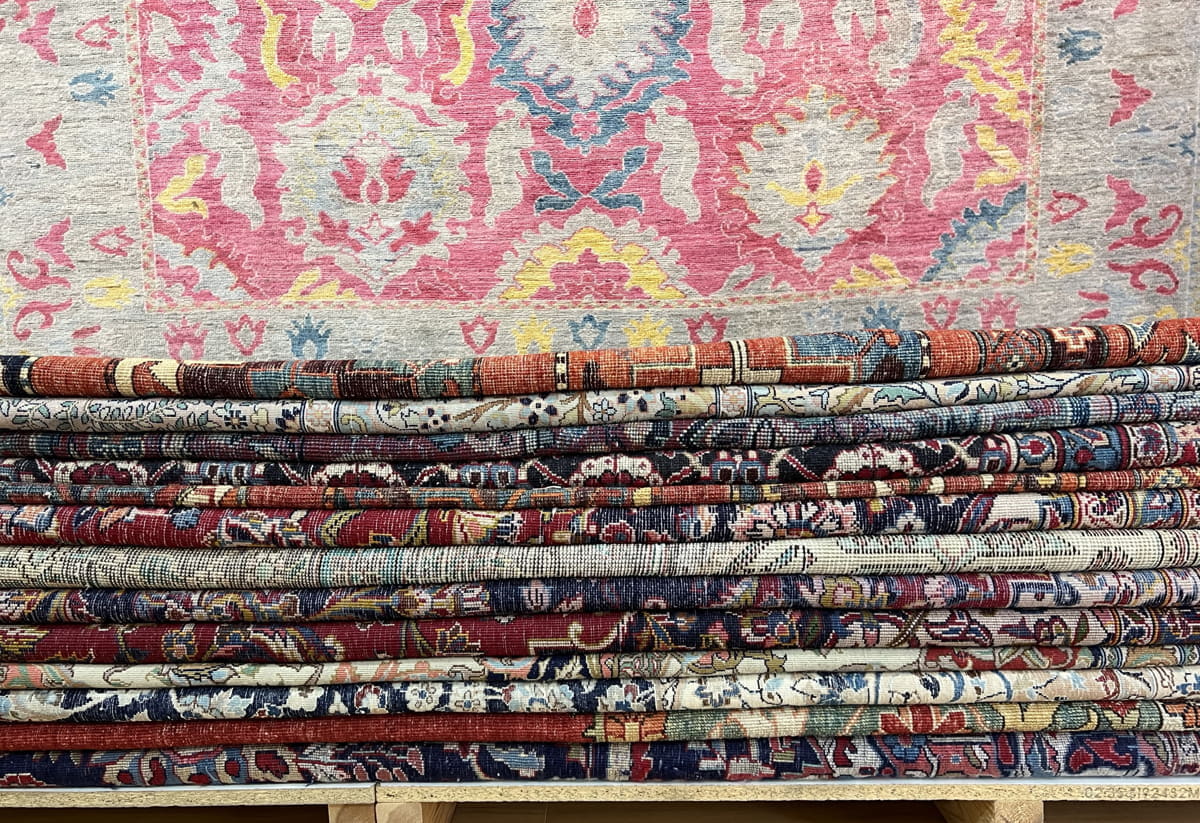
The types of rugs can be split between 3 main categories.
Table of Contents
ToggleTraditional design rugs, also known as classic rugs, are beautiful works of art that have been crafted to reflect the rich history and culture of the regions from which they originate. These rugs are known for their intricate patterns, vibrant colors, and unique motifs, all of which draw inspiration from the historical architecture and ancient art of the region.
Contemporary design rugs are a popular choice for those looking to add a touch of modern style to their home decor. These rugs use classic nomadic symbols that have been simplified and transformed into a landscape of colors and soft textures, resulting in a unique and modern form.
One of the benefits of contemporary design rugs is their versatility. They can be used in a variety of spaces, from a minimalist living room to a cozy bedroom. Additionally, they come in a range of sizes, making it easy to find the perfect rug for your space.
Transitional rugs are a versatile and popular choice for homeowners who want to blend traditional and contemporary styles in their home decor. These rugs are designed to bridge the gap between the two styles, creating a cohesive and balanced look that is both timeless and modern.
One of the key features of transitional rugs is their use of classic design elements, such as floral or geometric patterns, in a more modern way. These traditional elements are often paired with contemporary colors, textures, and materials to create a fresh and updated look. The result is a rug that can work well in both traditional and contemporary spaces.
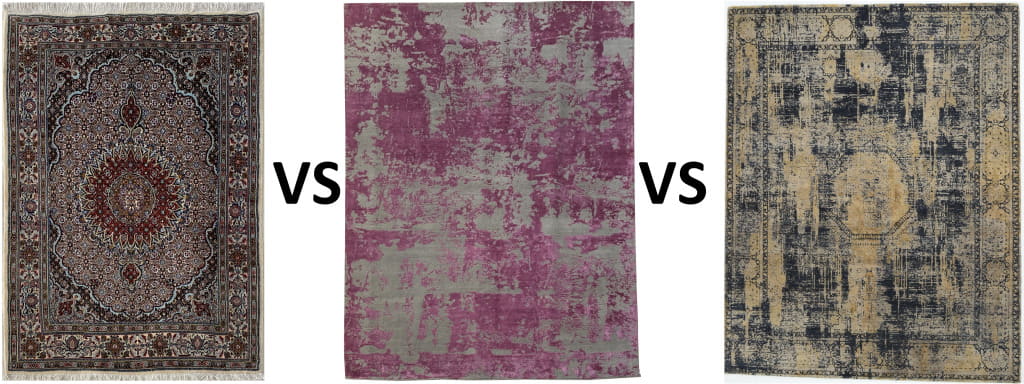
Persian carpets, also known as Iranian carpets, are a type of textiles that have been created for centuries in Iran (formerly known as Persia) for a variety of purposes, both for use in homes and for export.
Carpet making is a significant part of the culture and art of Persia that has been practiced by both nomadic tribes living in villages and towns, as well as by royal court artisans.
Persian carpets crafted during the sixteenth century Safavid court period are renowned for their intricate colors and creative designs, which have made them sought-after items in museums and private collections around the world.
The art and craft of rug weaving has been mentioned in several classical writings and ancient religions.
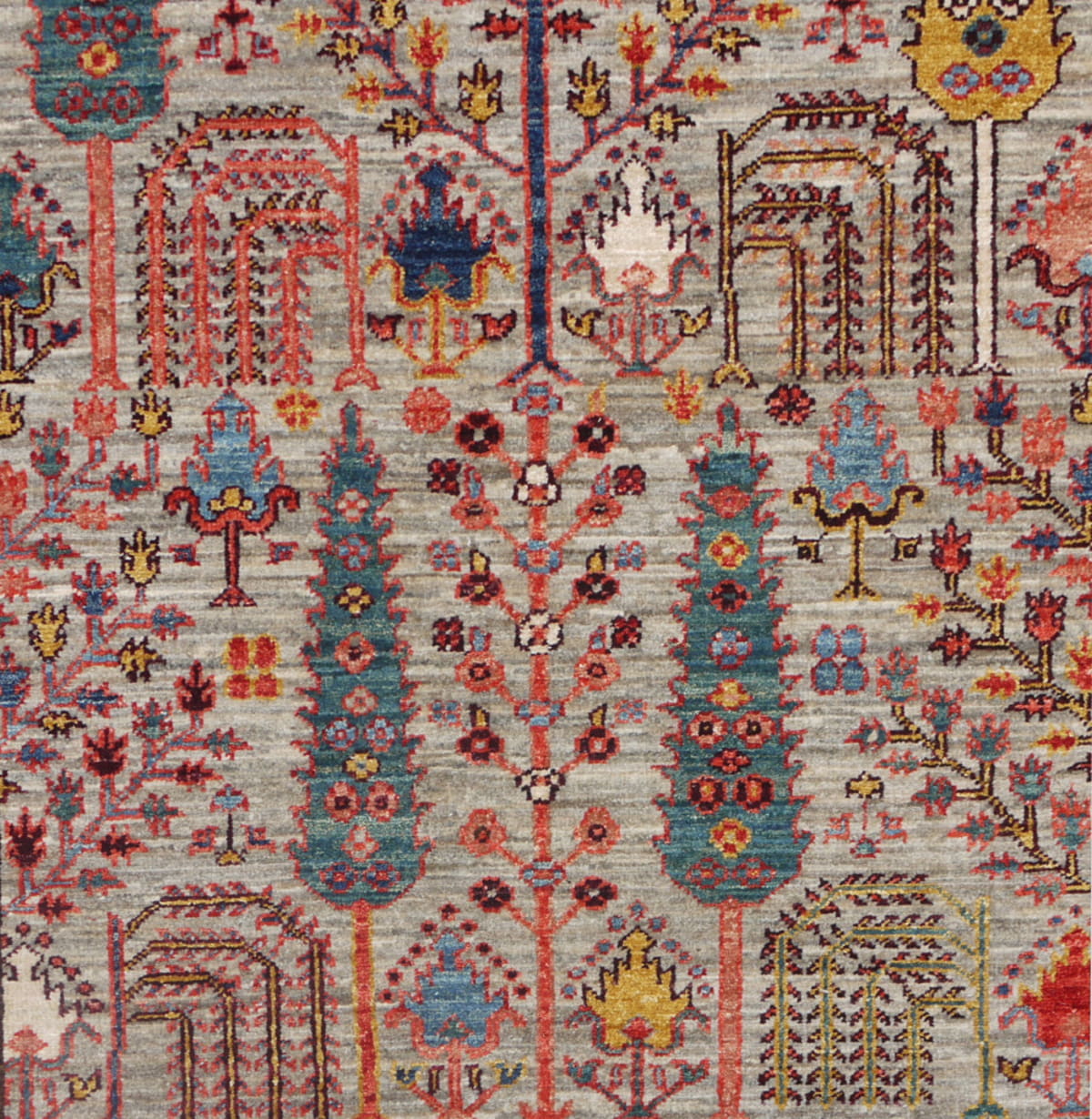
These pieces of art often feature unique motifs that reflect the history, culture and people of Iran. Depending on their origin, Persian rugs can come in many shapes and sizes including square, rectangular and round, with symmetrical designs based on that region.
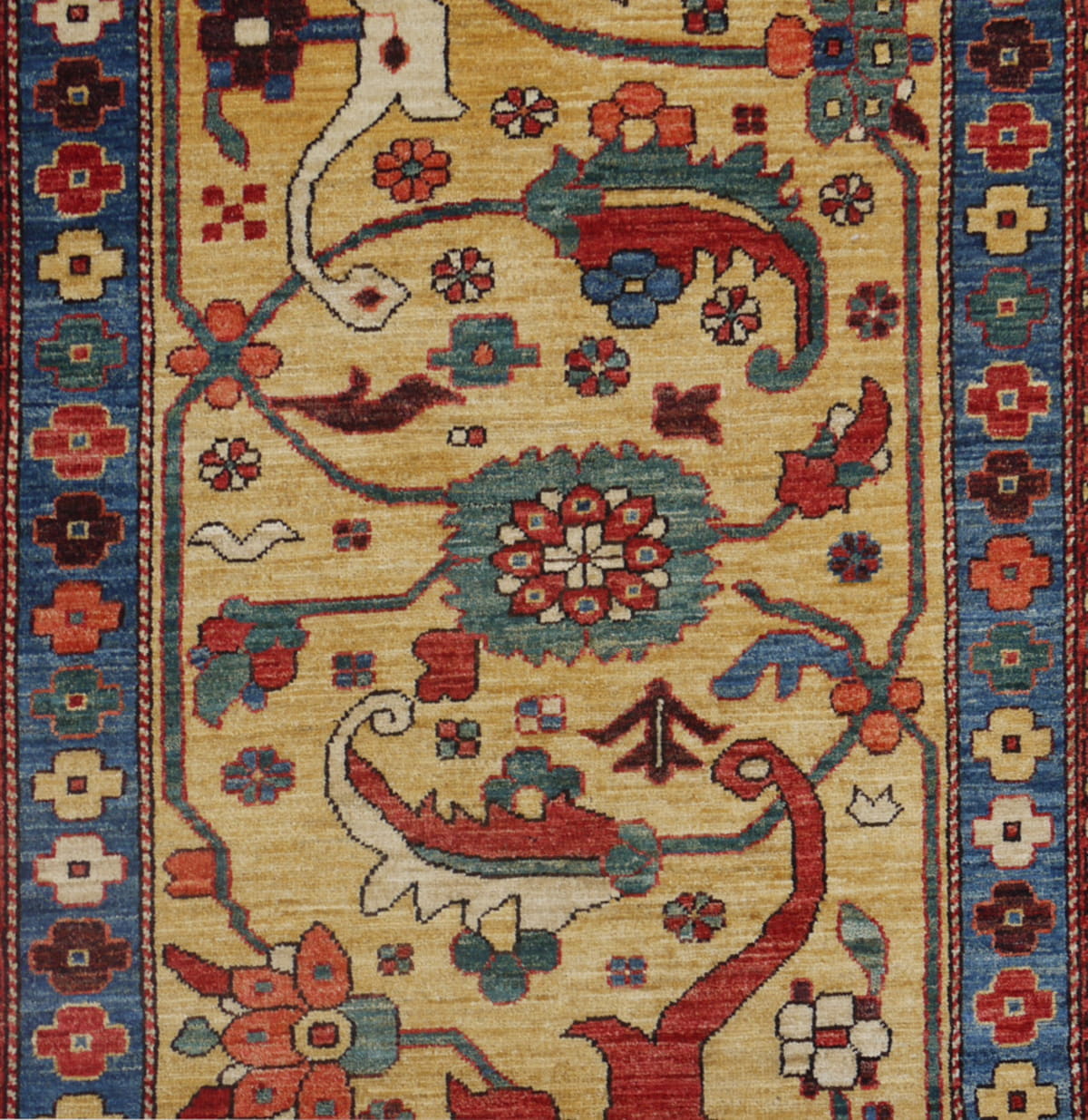

Carpets and designs from Isfahan are famous and popular, and boast an array of highly-detailed patterns, vibrant colours, and traditional styles. In addition to serving as decorative pieces within homes or businesses, these carpets can symbolize protection, power, or good luck for the owners.
These areas in Iran are known for their craftsmanship and superior materials used in high-quality rugs and carpets; from bright and vibrant hues, to intricate designs that are carefully crafted into every individual piece.
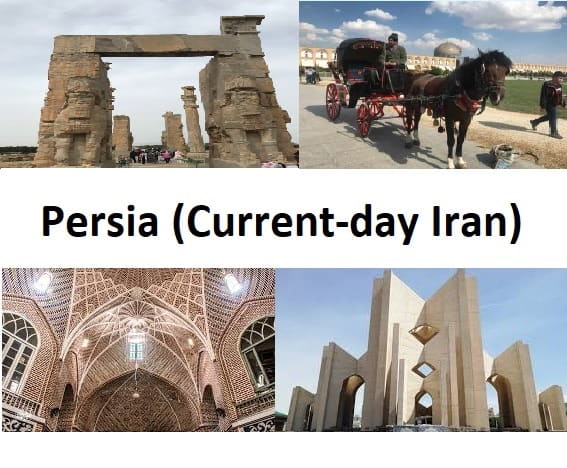
Tabriz is an another category of Persian carpets. These rugs and carpets have an incredibly long history of being produced in Tabriz, East Azarbaijan’s capital city located in the northwest of Iran.
These impressive rugs are renowned for their exquisite craftsmanship, with many designs including medallion, Herati/Mahi carpets, figural, pictorial and even three-dimensional designs.
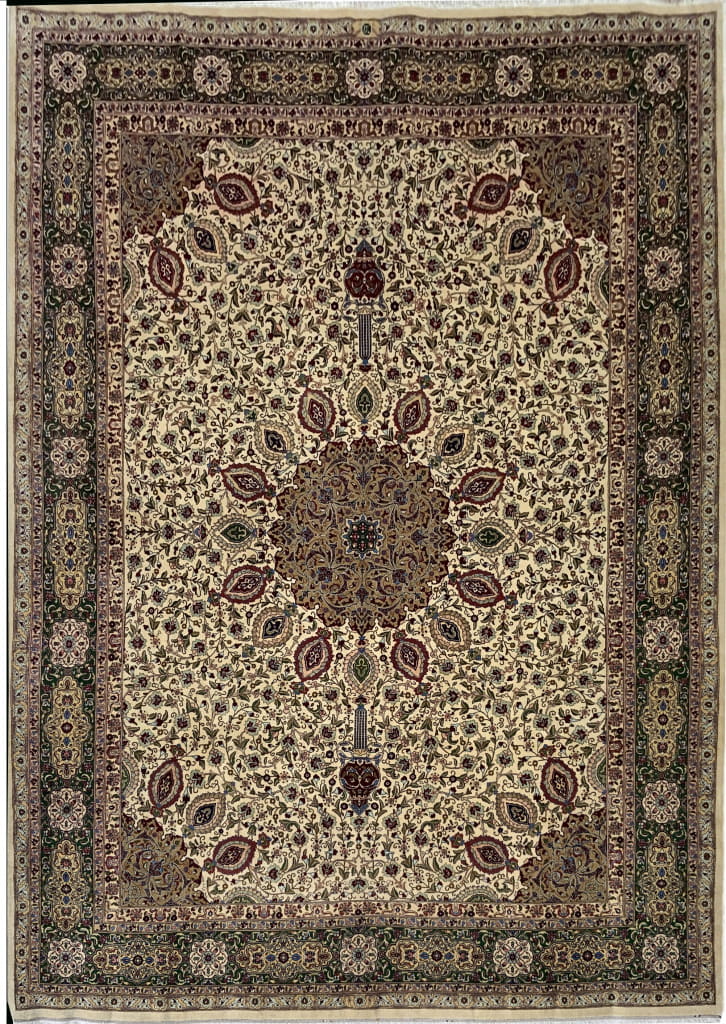
Many of these amazing pieces use either wool or silk threads, resulting in an amazing finish. Due to its significance within the world of ornamental and applied arts, Tabriz has become synonymous with the production of quality carpets.
This craft is still carried out today and is highly valued across the globe for its intricate detail and beauty that brings a sense of luxury to any room or space it’s placed in. This craft is still carried out today and these carpets are highly valued across the globe for their intricate detail and beauty that bring a sense of luxury to any room or space.
Kashan is another name for the city in west-central Iran. At the eastern base of the Central Iranian Range, it is located in a desert.
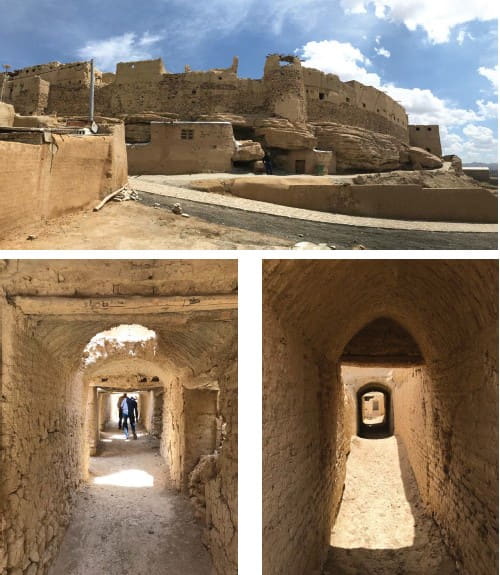
Kashan rugs are highly sought after for their intricate and elaborate design. Originating from the city of Kashan in modern-day Iran, these hand-knotted carpets often feature a diamond-shaped medallion on a Shah Abbas field.
This field is named after the Mughal ruler who made significant contributions to Persian textile art in the 16th and 17th centuries, and is characterised by its flower forms and garden-like ambience.
Not only are these rugs aesthetically beautiful but they also pay homage to the great contributions of the Mughal Empire (1587-1629) to the global history of textile arts and craftsmanship.
Many aspects of Kashan’s rugs remain timeless, making them some of the most prized pieces among collectors worldwide today.

The Shah Abbas field can be seen as an all-over pattern or one with a central medallion, adding to its visual appeal.
The city of Isfahan, situated in the middle of Iran and nestled between the majestic peaks of the Zagros Mountains, was the site of the Persian capital under Malik-Shah I and Shah Abbas the Great.
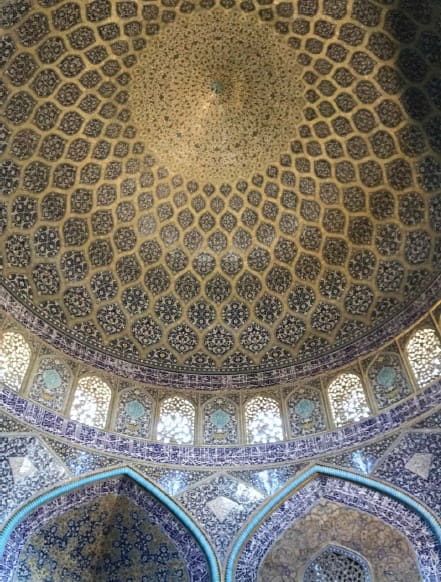
Although its renowned rug-making tradition has faced many obstacles over time, due to invasion and military occupation, truly it was during the Safavid dynasty (1501-1736), more specifically during Shah Abbas’ rule, that Isfahan experienced a period of unprecedented artistry and prosperity.
During this time, cultural heritage flourished in different forms as ornate mosques, grand bazaars, and exquisite gardens were built; thus making Isfahan one of the most admired cities in Persia at that time.
In fact, it is often said that such beauty was never duplicated or surpassed throughout history.
Those seeking to own a genuine Isfahan carpet must be prepared to reach deep into their pockets–but it is worth it. For its construction is nothing short of that of a work of art, requiring immense skill and precision. These carpets have a knotting density of up to 800,000 knots per square metre.
When you touch it, you can feel the extraordinary texture and exquisite pattern that has been woven by experts with great detail and attention. Moreover, such carpets boast an incomparable luxury quality that sets them apart from others.
Owning one makes for an exceptional experience that will bring you joy for years to come – not just because of its beauty but also for the appreciation of the unrivalled craftsmanship that went into creating it.
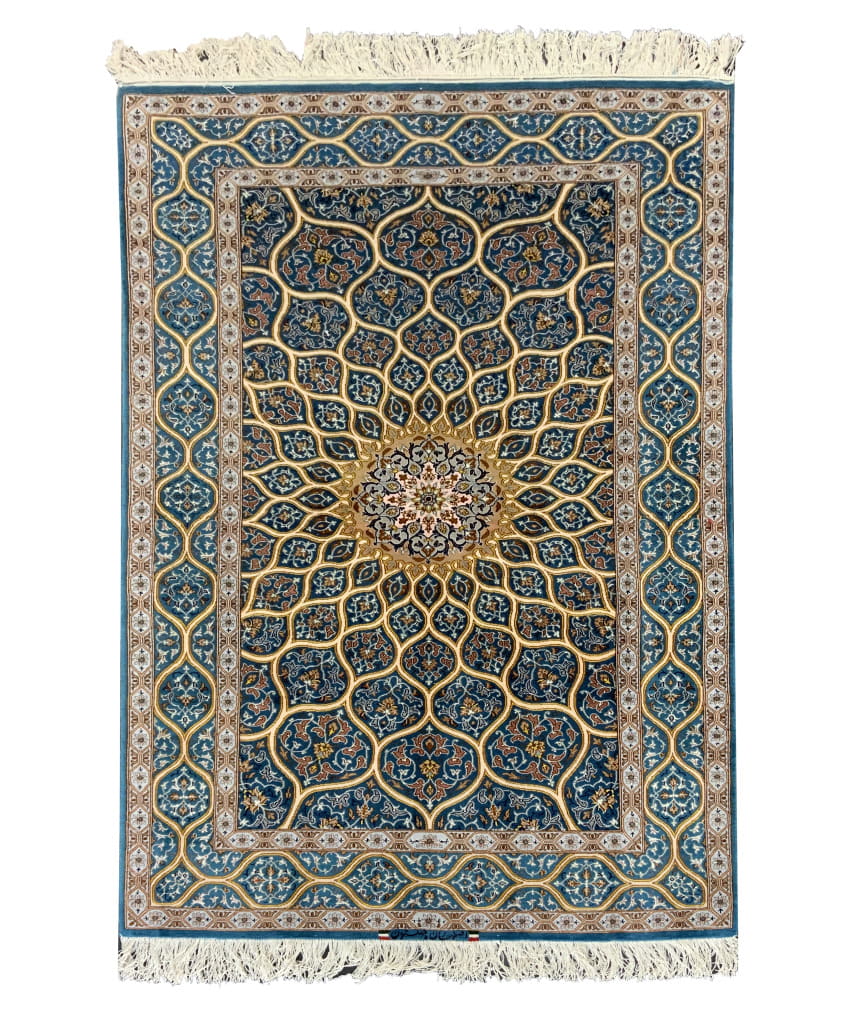
Nain, located a mere 150 kilometers from the legendary carpet weaving centre of Isfahan, is an significant site in the central Iranian carpet industry. Although it initially produced carpets of the same style as its more established neighbouring city, Nain soon began to develop its own unique designs around the mid-1930s.
Its workshops are highly renowned for their quality and accuracy, producing some of the finest carpets in the world. The Habibian brothers, Fathollah (1903–1955) and Mohammed, have a special place in history as they are often credited with founding what is now known as ‘Nain rugs’. These brothers had impressive skill with carpets and their fame spread rapidly throughout the region due to the high standards maintained by their craftsmanship.
Today, these immaculate pieces are still sought after and remain among some of the most exquisite examples of Persian artistry in existence.
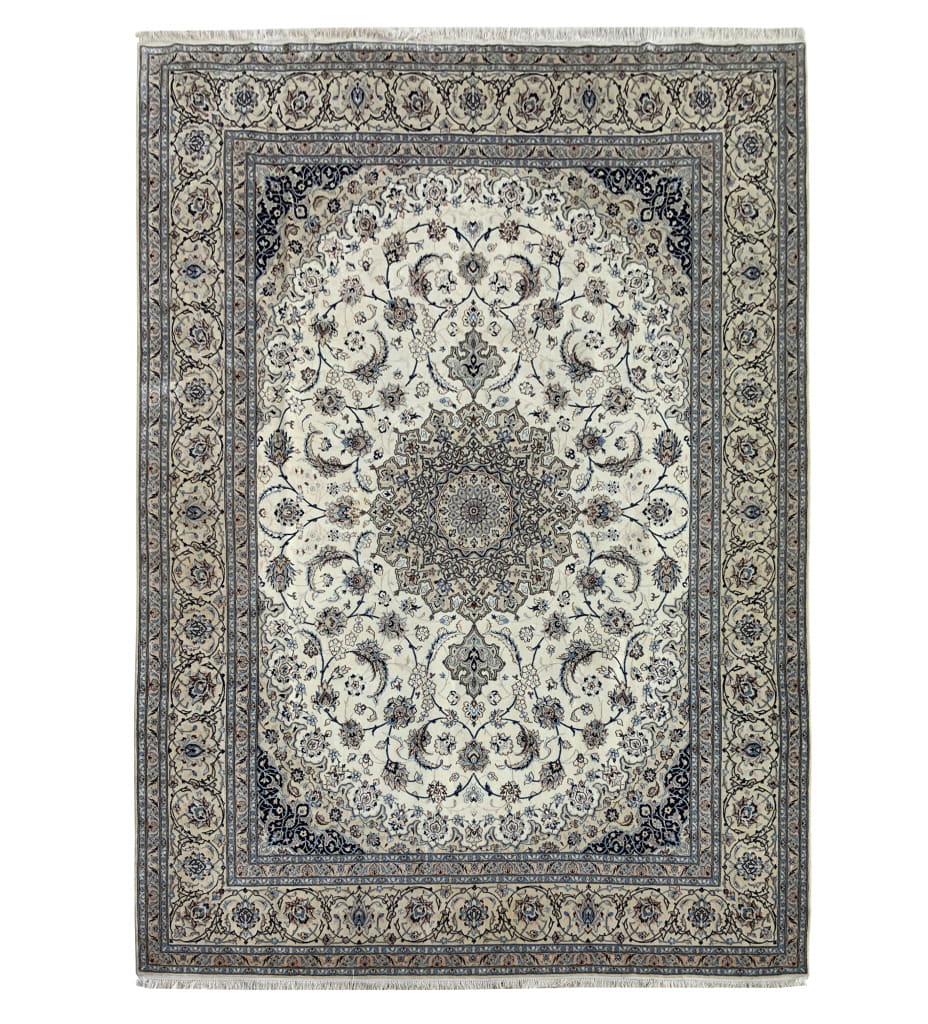
Qum (also spelled as Qom) is an ancient holy place in central Iran, situated 100 kilometres south of Tehran, and renowned for the remarkable quality of carpets woven there in the last century. The city has a unique history; waves of Arab and Mughal invasions have shaped its development over the years.
Most Qum rugs are small to medium in size, and many of them are made of expensive silk or very fine wool that is densely knotted to create incredibly gorgeous carpets that are frequently put on the walls of the homes of their proud owners.
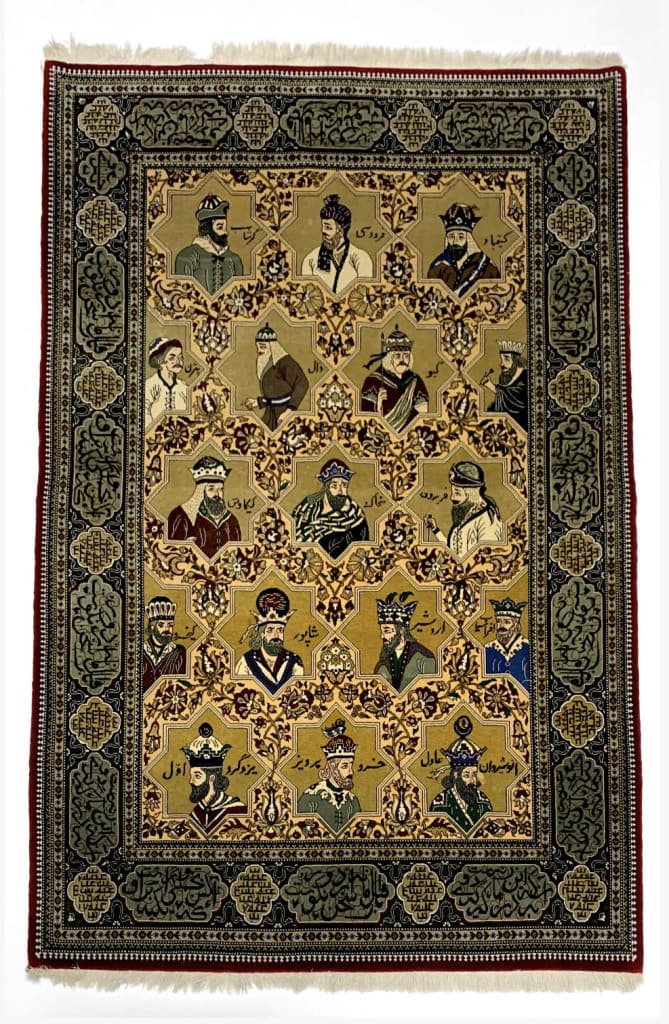
Handmade with natural fibres such as silk or wool, these carpets feature intricate patterns ranging from geometric designs to florals or figurative elements inspired by Persian miniatures.
Today, Qum’s carpets are highly sought-after and some of the most expensive on the market, rivaled only by those from nearby Bijar, Nain, and Isfahan. Even more significantly, these exquisite items are produced with craftsmanship which makes them truly stand out in terms of quality.
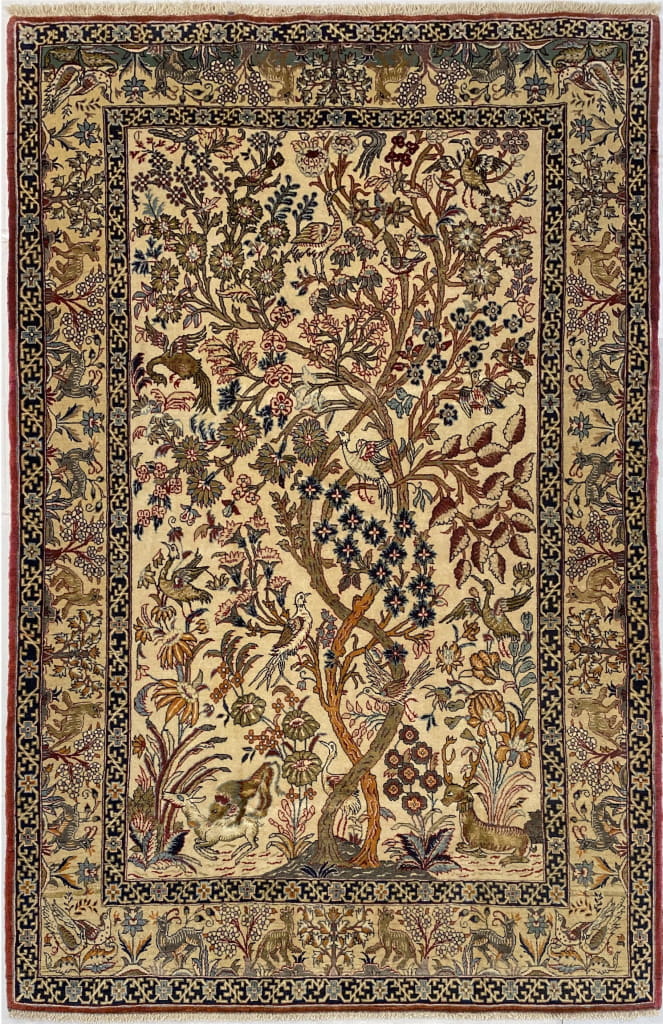
Authentic Oriental rugs and Persian carpets are highly sought after, due to their intricately crafted patterns and unique designs. Crafted with patience and precision, these stunning carpets are created using a traditional Turkish knotting method, which involves the careful knotting of yarn strings into the weave.
These intricate works of art typically feature a variety of exquisite rug materials, including wool, silk, and bamboo. Each material adds something special in terms of texture, softness, color, and vibrancy – highlighting the vast array of cultural influences that are reflected within the patterns adorning these gorgeous area rugs.
Not only does this make for beautiful pieces of art, but it also makes each area rug wholly unique – making Oriental carpets one-of-a-kind pieces, with a story to tell. No two oriental rugs can ever be exactly identical.
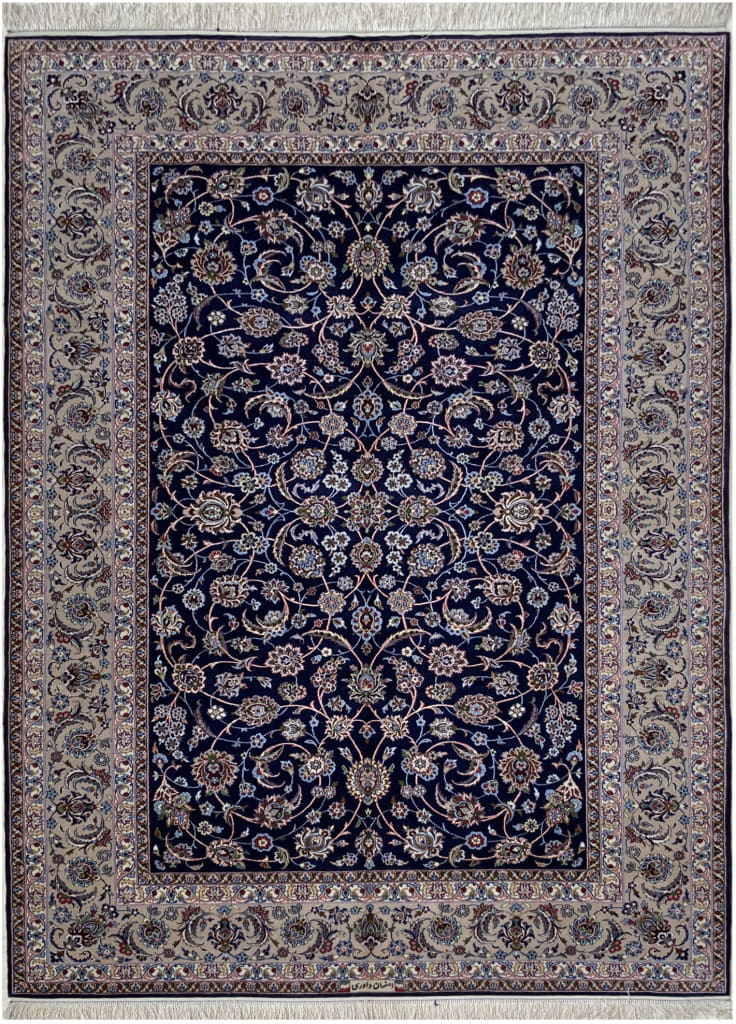
Although modern technology has led to more automated methods of creating the yarns used in contemporary carpet production, many still prefer traditional hand-weaving techniques such as those used in crafting authentic Oriental and Persian rugs – a complicated process requiring hours of labour.
This attention to detail – coupled with the fact that no two pieces are ever alike – makes these masterpieces a highly coveted investment for any home or living space.
Wool rugs are hand-crafted works of art, thoughtfully created by expert weavers over months. Not only does the intricate knotting feature impressive and ornate patterns, but wool also provides excellent sound insulation, making these area rugs perfect for environments with plenty of external noise.
Furthermore, due to its sturdiness and resilience, wool has great longevity. These rugs tend to last for generations when cared for properly – handed down as cherished heirlooms from one generation to the next!
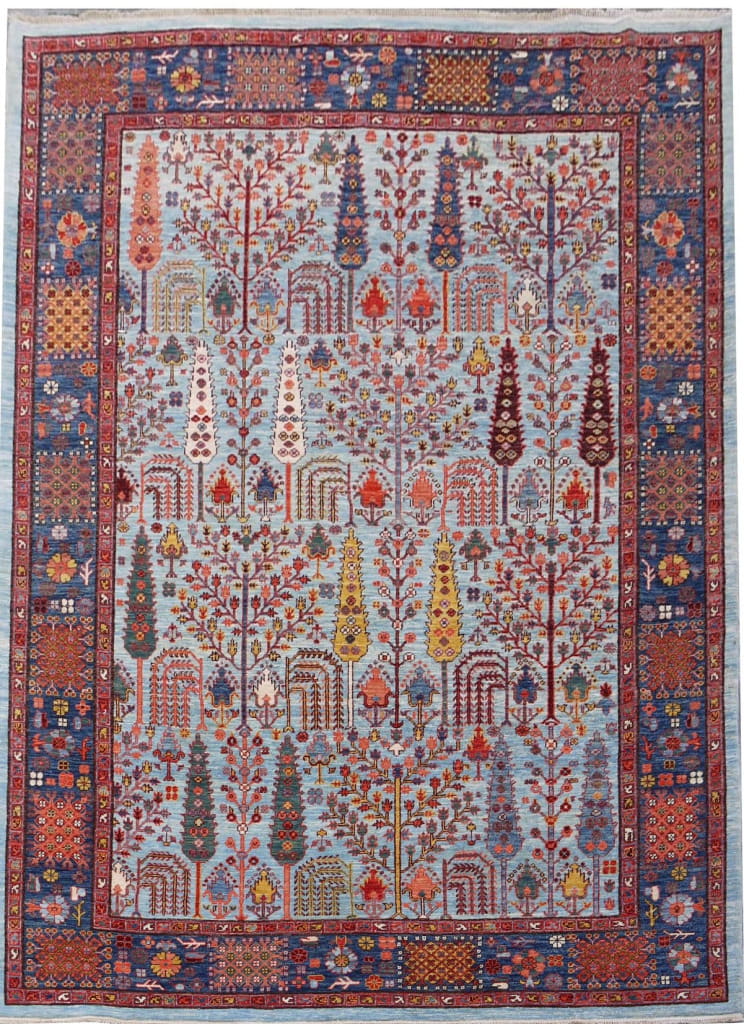
Hand-knotted rugs, also known as Oriental rugs, are pieces of art that have been crafted for centuries by highly talented weavers. It takes an incredible amount of precision and dedication to tie thousands of knots per square inch on a vertical loom, which can take months if not years to make a single rug.
This ancient technique requires immense skill, as the tight knots must be perfectly aligned in order to create beautiful designs, and interesting shapes. Not only do hand-knotted rugs bring colour and texture to any home, they also represent the traditional craftsmanship that has been passed down through generations of artisans.
Hand knotting a rug on a handloom requires anywhere from 1 to many more people, depending on the size of the rug, and is an extremely labour-intensive process. It takes an average of over 3000 hours, or 384 working days, for an artisan to make one square metre of fine hand-knotted rug with approximately 800,000 individual knots.
Their value truly lies in their not only in their decorative attributes, but in the stories they tell and the moments they’re connected to over the years. Each area rug is full of potential – a treasure that will be appreciated for many years to come.
The process involves knotting individual strands of wool or silk together into a row of warps which are stretched on a loom, following a pattern on a graphic paper. This is a skill that takes years to perfect and is often passed down through generations, so these skilled weavers are able to create works of art with their hands which often hold deep cultural meanings for many communities around the world.
Each handmade rug is unique, with its own story to tell and an invaluable connection to our past. Whether they’re used as floor coverings or wall hangings, these precious works of art will always add character and charm, making them truly timeless investments.
Modern rugs in handmade quality are made of natural fibres such as wool, silk, Bamboo silk or Tencel silk, and they feature abstract or landscape designs in soft or bright colours that make them stand out from traditional pieces. These contemporary designs are often inspired by the latest trends in fashion and interior design, allowing to add some modern flair to any room or space.
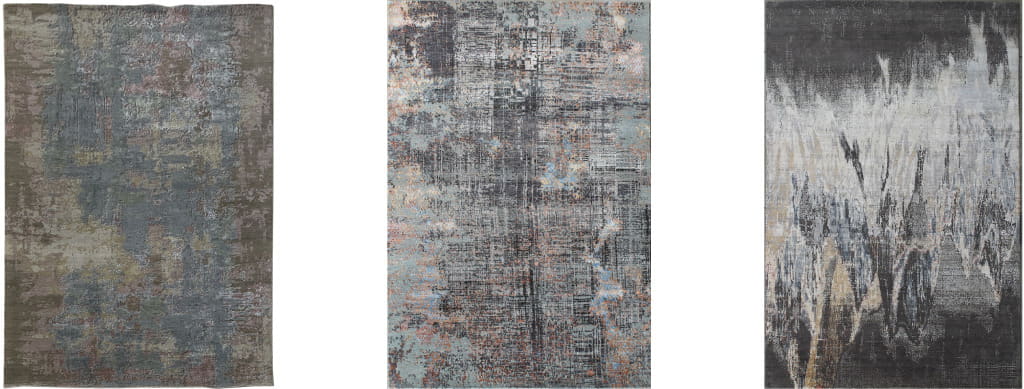
These fashionable modern carpets come in a variety of shapes and sizes which are custom-made to suit contemporary home architecture or modern apartments. Many of these modern rugs also feature bold patterns or repeated textures, such as geometric shapes or abstract arts, making them perfect for adding a stylish touch of personality to any space.
Silk is a luxurious material that has been revered for centuries, with its mysterious origins still being contested today. Many believe that the earliest silk fibres were produced by silkworms around 2600 BC in China, while others credit India as the birthplace of this remarkable textile.
Ancient art forms such as Pazyryk carpets bear witness to the long-standing history of silk crafting in the Middle East and East Asia. Vibrant cultures in India, Kashmir, Tibet, and Persia continue to use traditional weaving techniques to create stunning designs.
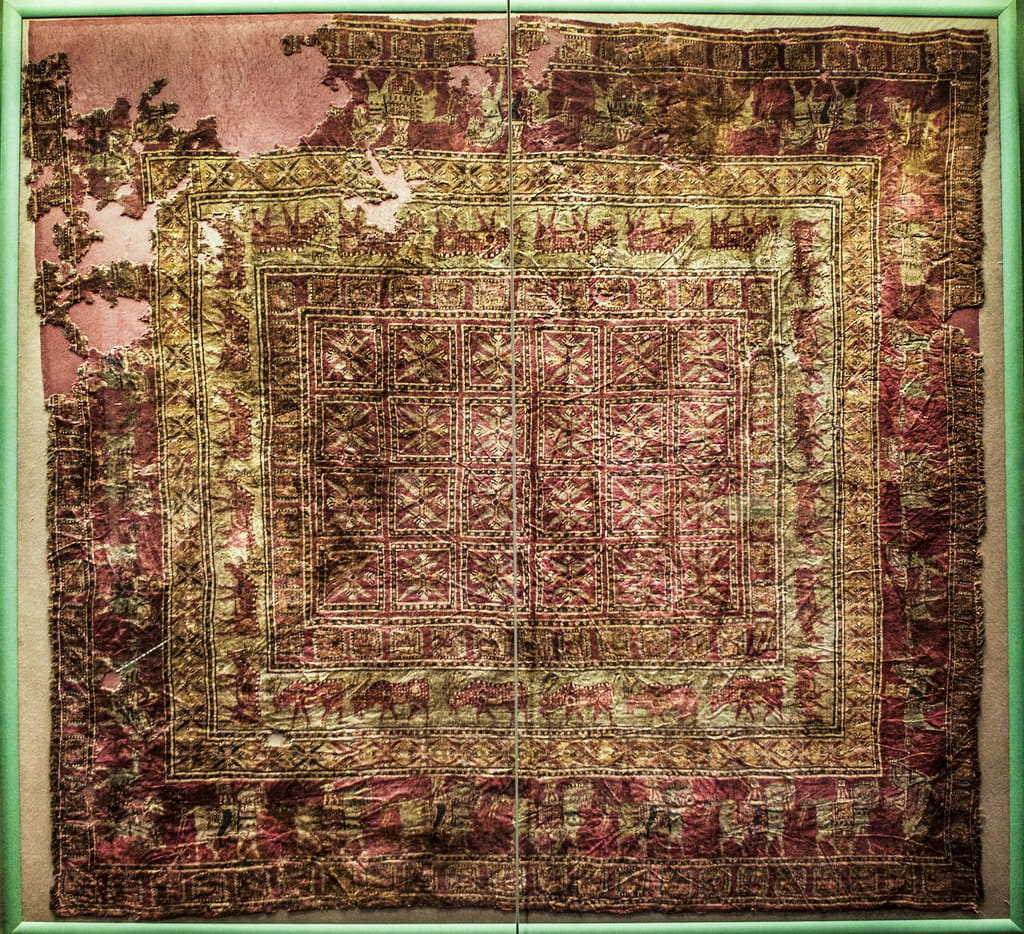
What gives silk its unique qualities is its combination of fibrous proteins strengthened further by amino acids – making it stronger than steel! This means that it can be stretched easily into any shape or pattern desired.
The lightness and beauty of silk make it a highly sought-after material for clothing and accessories as well as home décor. Silk rugs were previously favored by royal families for their exceptional durability and quality.
This is due to the unique properties of silk fabric – it is an extensible fibre that can be easily molded into any shape imaginable. Made in many countries around the world including Kashmir, Iran, Turkey, Persia, and India, it’s no wonder that silk rugs are such a popular option for homeowners who want to add a touch of luxury to their decor.
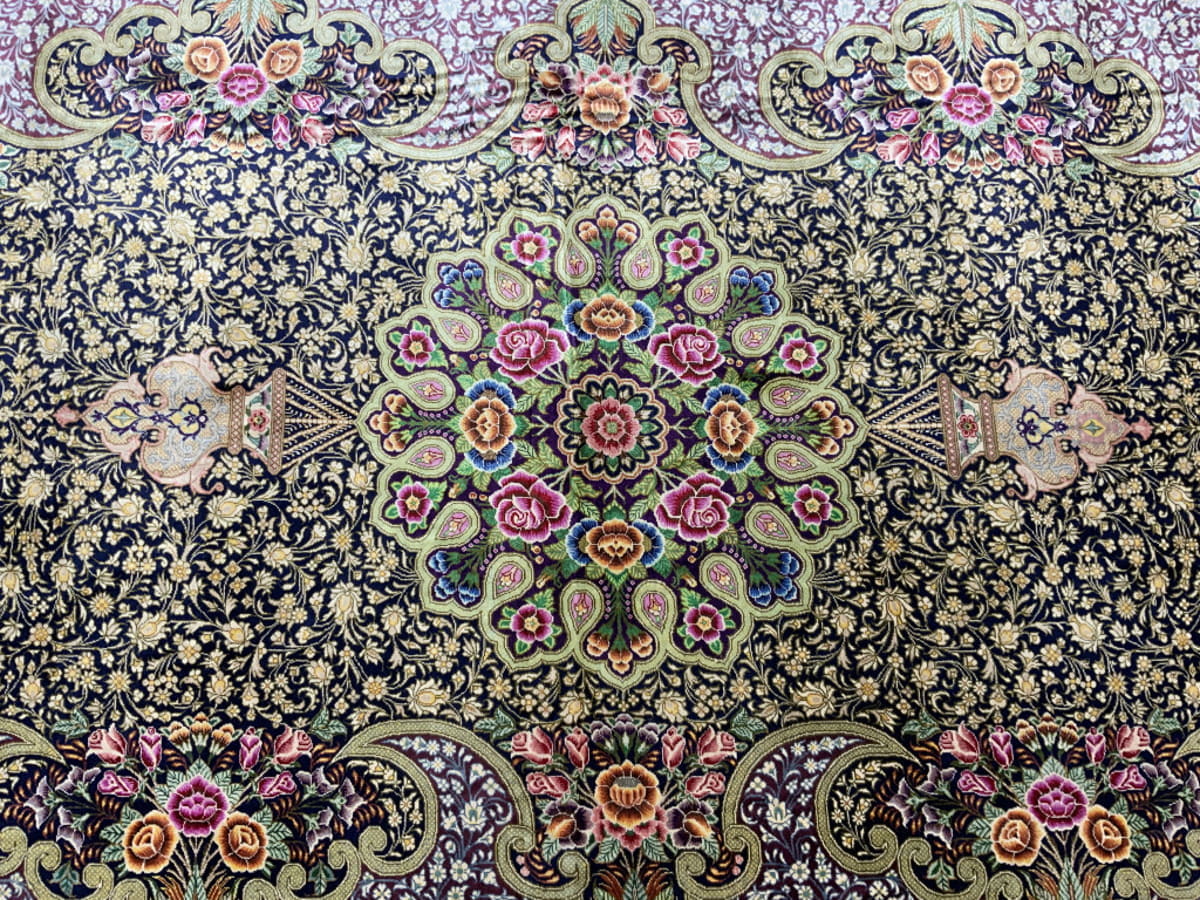
This is due to the unique properties of silk fabric – it is an extensible fibre that can be easily molded into any shape imaginable. Grown in many countries around the world including Kashmir, Iran, Turkey, Persia, and India, it’s no wonder that silk rugs are such a popular option for homeowners who want to add a touch of luxury to their decor.
Not only do they look beautiful in any room of the house – from living rooms to dining rooms – silk rugs also come in both cotton and wool varieties as well as combinations of other materials. Silk rugs possess a timeless elegance and style that cannot be replicated with other types of floor coverings. This rug type is also highly collectible.
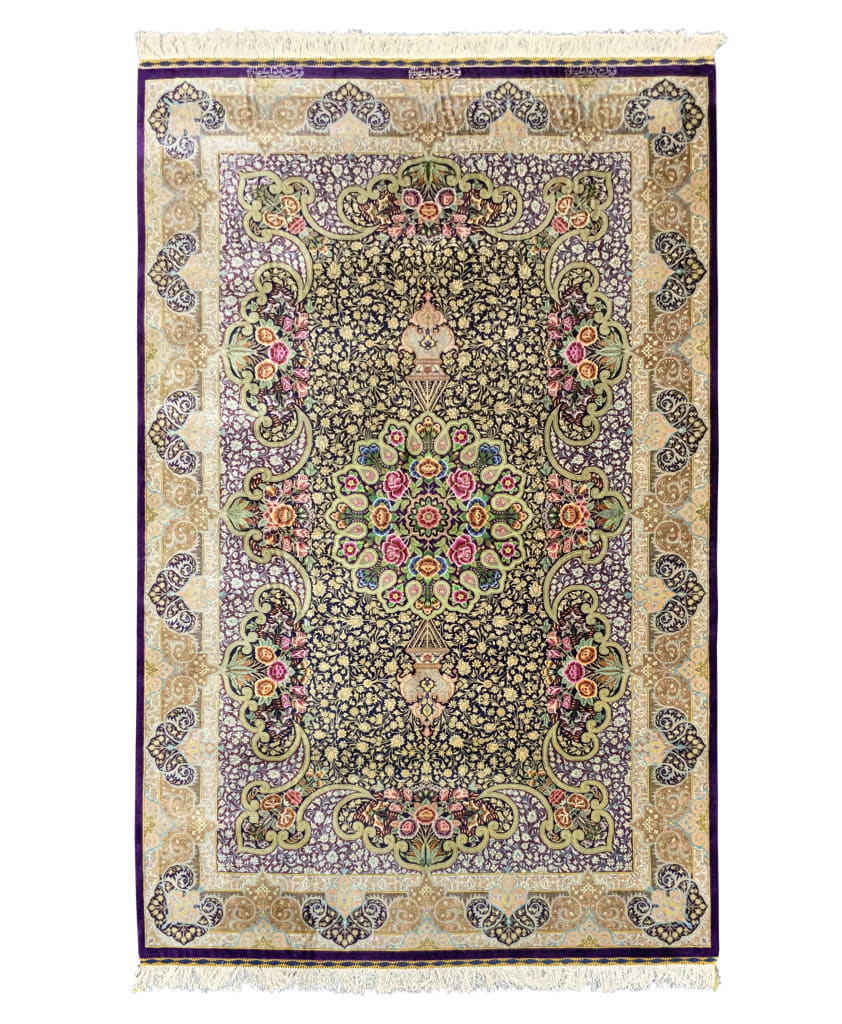
Featuring a unique design element, square rugs are ideal for adding a chic and modern touch to any room or space. From classic Persian designs to modern abstract works of art, these four-sided floor coverings come in different shapes, sizes, and materials – making them perfect for any style or budget.
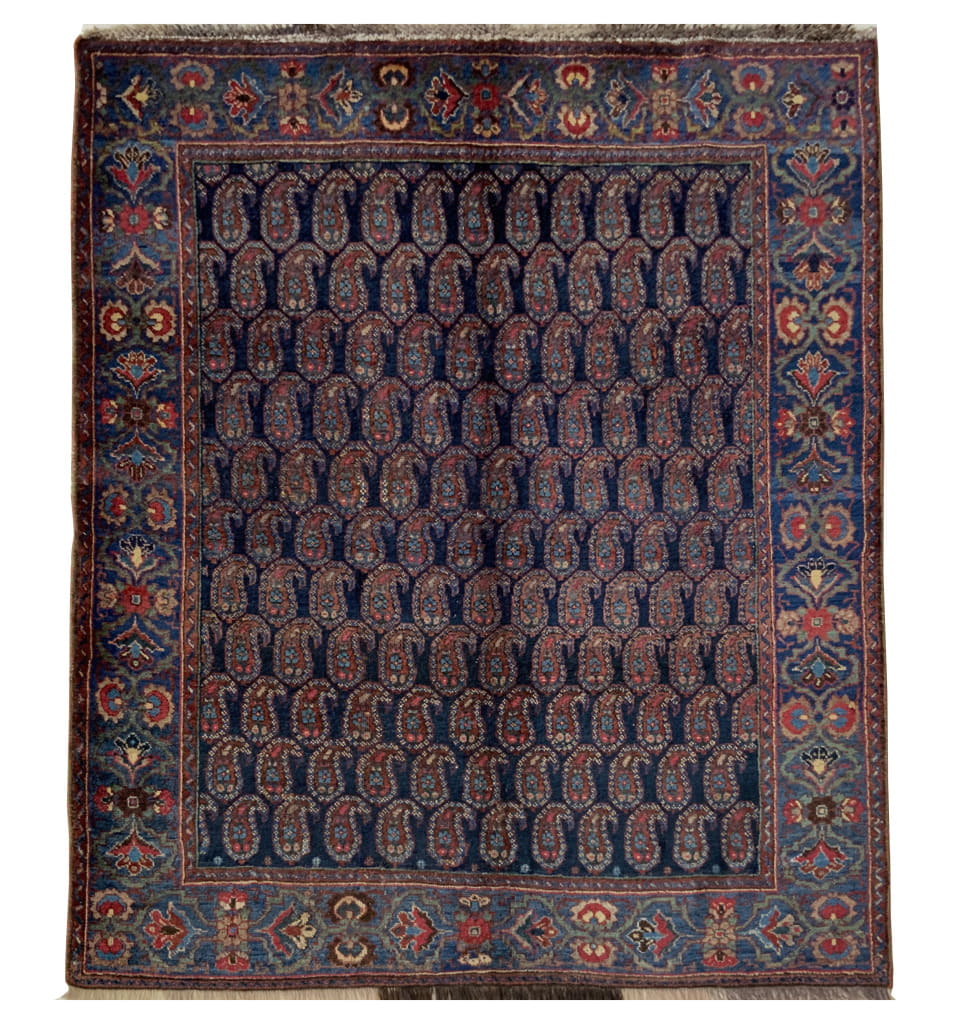
Round rugs are an excellent alternative to square rugs, as they provide a warm and inviting atmosphere while creating visual interest in any room. Ideal for adding a touch of softness or drama to your home, they come in oval or round shapes in many different materials – from wool, cotton, and silk to synthetic fabrics such as polyester or nylon – providing plenty of variety and choice.
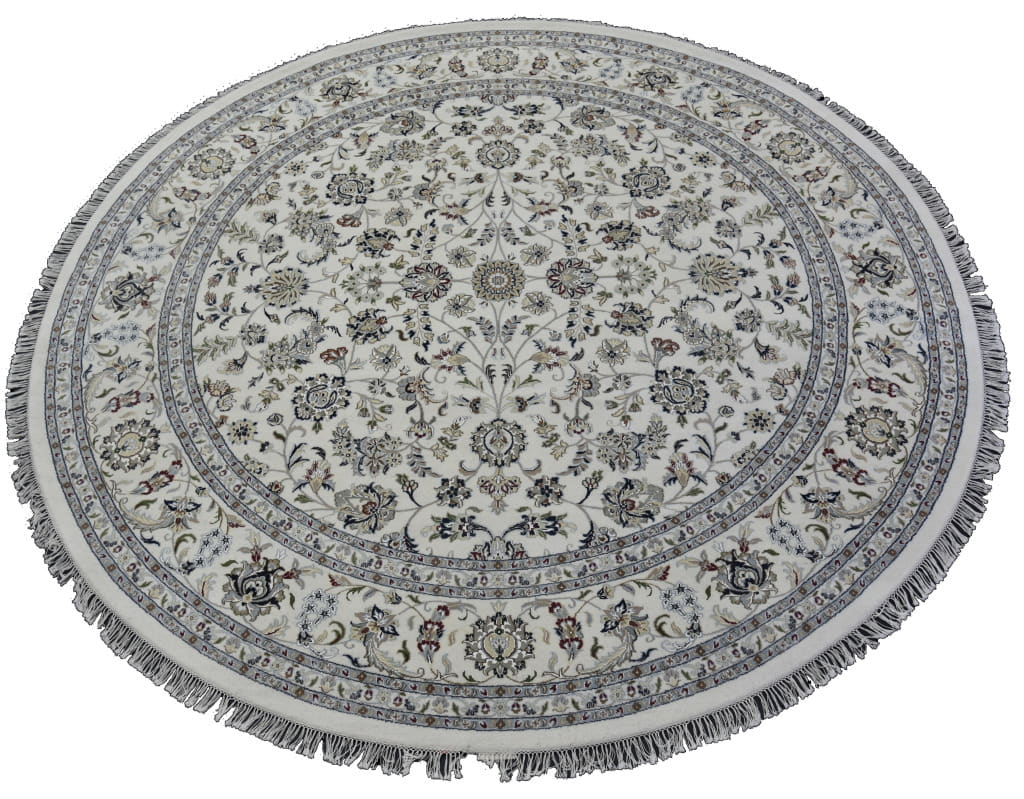
Whether you’re looking for a statement piece or something more subtle, square and round rugs can be used to transform any interior space – making them an essential part of any home décor.
Flatweave rugs, also known as kilim rugs, are made using a combination of two or more tightly woven threads. The flat weave technique creates a unique look that adds texture and interest to any room. While hand-woven rugs are luxurious, flat weaves are beautiful and inexpensive.
These rugs are often used as runners, accent pieces, even in areas where there is a lot of foot traffic. Flat weave rugs come in a variety of colours and patterns, making them an easy way to update a room without breaking the bank. They are also extremely durable and can be used in high-traffic areas, such as entryways and hallways.
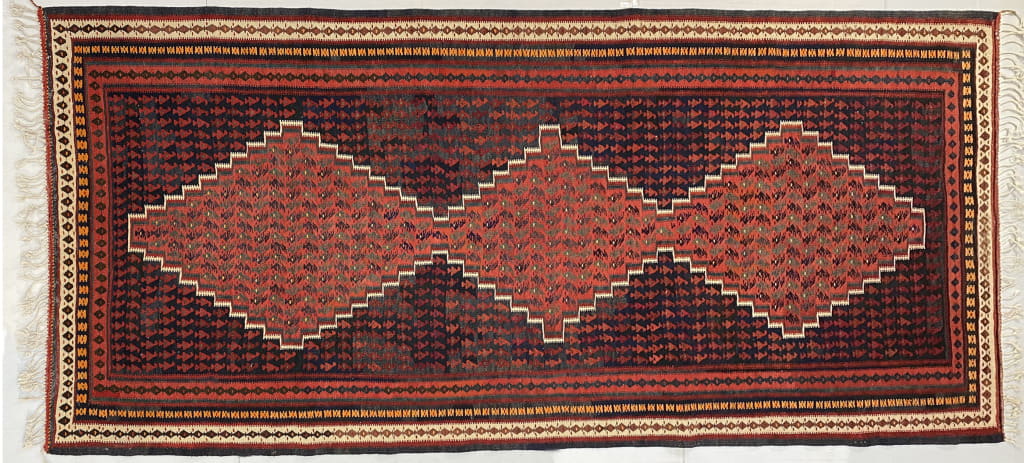
Because of their low profile and tight weave construction, flatweave rugs can easily be vacuumed or cleaned with a damp cloth. Placing a rug pad will help restrict the rug/carpet from moving from its original place. This makes them ideal for busy households or those who don’t want to worry about cleaning their rugs too often.
A carpet’s pile is an indicator of its fibre density, which can vary and provide a different texture when touched. The thickness of the rug can range from high pile to low pile, the former being plusher, and the latter flatter in nature. Handwoven and hand-knotted rugs typically contain a dense pile, while flatweaves or kilims will have no pile at all.